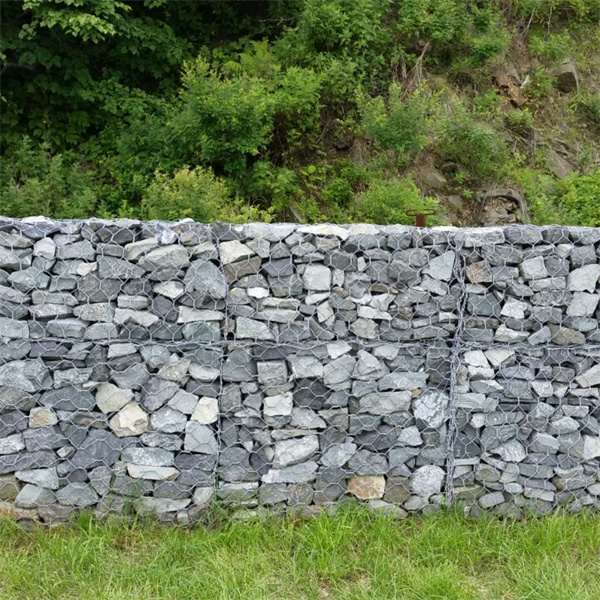Dec . 19, 2024 00:51 Back to list
circular gabion baskets
The Versatility and Aesthetic Appeal of Circular Gabion Baskets
In the realm of landscaping and civil engineering, gabion baskets have become increasingly popular due to their functionality and visual appeal. Among the various designs, circular gabion baskets stand out for their unique aesthetic and practical applications. This article explores the benefits, uses, and design aspects of circular gabion baskets.
What Are Gabion Baskets?
Gabion baskets are wire mesh containers filled with rocks, stones, or concrete. Traditionally used in erosion control, slope stabilization, and riverbank protection, gabions provide a natural and effective way to manage soil and water. The circular design of certain gabion baskets offers versatility in both structural integrity and aesthetic appeal, making them a favorable choice for various projects.
Benefits of Circular Gabion Baskets
1. Stability and Durability Circular gabion baskets are designed to withstand significant pressure and environmental stress. The curve geometry distributes weight evenly, enhancing structural stability. They resist deformation under heavy loads, making them ideal for retaining walls and other supporting structures.
2. Eco-Friendliness One of the most significant advantages of using gabion baskets is their eco-friendly nature. The materials used for filling can often be sourced locally, reducing transportation emissions and costs. Additionally, the gaps in the wire mesh facilitate vegetation growth, promoting biodiversity and integrating the structure into the natural environment.
3. Versatile Applications Circular gabion baskets can be employed in various applications. They function effectively as seating arrangements in public parks, as planters for greenery, or even as decorative elements in gardens. Their versatility allows for creative landscaping designs that enhance the visual appeal of outdoor spaces.
4. Cost-Effective Solution Compared to traditional construction materials, circular gabion baskets are a cost-effective solution. The filling materials such as gravel or stone are often less expensive than concrete or bricks, and the installation process is relatively straightforward, reducing labor costs.
circular gabion baskets

5. Aesthetic Appeal The unique circular shape of these gabion baskets adds a modern touch to landscaping projects. They can be customized in size, color, and filling material, allowing for unique designs that blend seamlessly with the natural surroundings. Whether used in parks, gardens, or urban settings, circular gabion baskets can serve as functional and decorative elements.
Designing with Circular Gabion Baskets
When designing with circular gabion baskets, several aspects should be considered
1. Size and Scale The size of the gabion basket should be proportional to the surrounding landscape. Larger baskets can serve as focal points, while smaller ones can be integrated into garden beds or along pathways.
2. Filling Material The choice of filling material significantly impacts the overall look and function of the gabion. River rocks, colorful pebbles, or even recycled materials can be used to create a visually appealing contrast with the wire mesh.
3. Placement and Arrangement Thoughtful placement can enhance the effectiveness and aesthetics of circular gabion baskets. For example, they can be arranged in a circular formation to create a cohesive look or strategically placed to direct water flow in a garden.
4. Integration with Nature To maximize ecological benefits, circular gabion baskets can be planted with native vegetation. This not only improves biodiversity but also helps in creating a more harmonious landscape.
Conclusion
Circular gabion baskets offer a blend of functionality and beauty that can enhance any outdoor space. Their stability and cost-effectiveness make them a practical choice for various applications, from landscaping to erosion control. As outdoor design continues to evolve, incorporating elements like circular gabion baskets can contribute to sustainable and visually appealing environments. Whether used in public parks or private gardens, these structures provide a unique opportunity for creativity and ecological stewardship, proving that effective engineering can indeed be beautiful.
-
HESCO Gabion Baskets for Coastal Erosion Prevention
NewsAug.22,2025
-
Longevity and Durability of River Rock Gabion Walls
NewsAug.22,2025
-
How to Integrate Gabion 3D Walls in Urban Planning
NewsAug.22,2025
-
Reno Mattress Gabion Applications in Civil Engineering
NewsAug.22,2025
-
How to Install Wire Mesh for Gabion Baskets Properly
NewsAug.22,2025
-
Best Materials for Filling a Chain Link Gabion
NewsAug.22,2025
-
Wire Mesh Thickness Impact on Gabion Wall Load Bearing
NewsAug.12,2025






